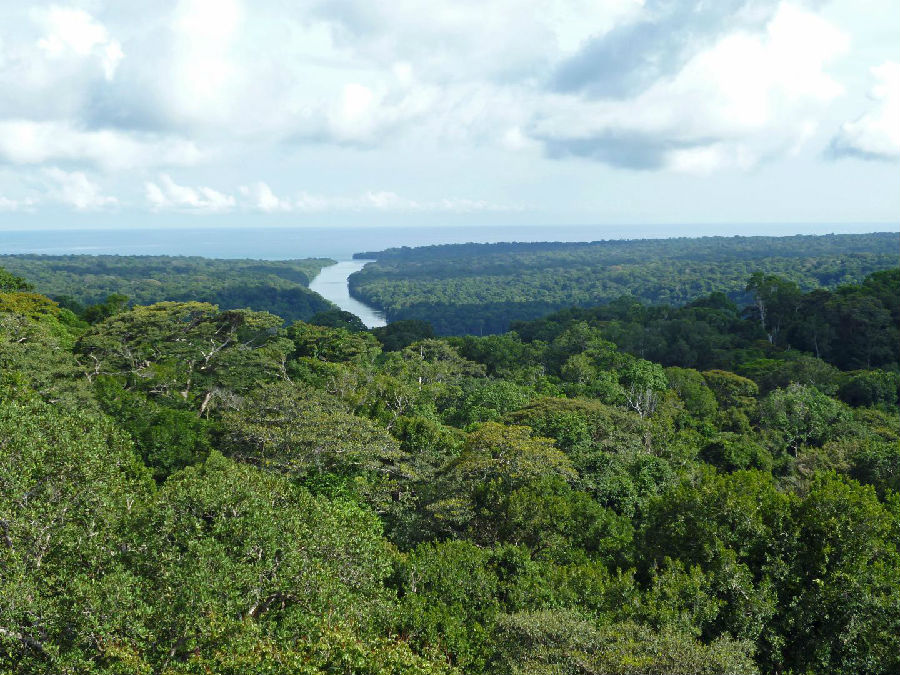Goodness knows what the results would be if anyone attempted a similar exercise with the planet's estimated 20,000 types of lichens, 50,000 species of mollusk, or 400,000-plus beetles.
要是有人試圖對這顆行星上的大約2萬種地衣、5萬多種軟體動物或40萬種以上甲蟲做類似的工作,天知道會有什么結(jié)果。
What is certain is that there is a great deal of life out there, though the actual quantities are necessarily estimates based on extrapolations — sometimes exceedingly expansive extrapolations. In a well-known exercise in the 1980s, Terry Erwin of the Smithsonian Institution saturated a stand of nineteen rain forest trees in Panama with an insecticide fog, then collected everything that fell into his nets from the canopy. Among his haul (actually hauls, since he repeated the experiment seasonally to make sure he caught migrant species) were 1,200 types of beetle.
有一點是肯定的,世界上存在著大量生命,雖然實際數(shù)量只能根據(jù)推斷——有時候是漫無邊際的推斷——來進行估計。20世紀80年代,在一次著名的實驗當(dāng)中,史密森學(xué)會的特里·歐文在巴拿馬雨林里用殺蟲劑噴灑了19棵樹,然后撿起從樹上掉進他網(wǎng)里的一切東西。在他的捕獲品當(dāng)中(實際上是幾次捕獲品,因為他按季節(jié)重復(fù)了這個實驗,以確保逮住遷移的物種),有l(wèi)200種甲蟲。

Based on the distribution of beetles elsewhere, the number of other tree species in the forest, the number of forests in the world, the number of other insect types, and so on up a long chain of variables, he estimated a figure of 30 million species of insects for the entire planet — a figure he later said was too conservative. Others using the same or similar data have come up with figures of 13 million, 80 million, or 100 million insect types, underlining the conclusion that however carefully arrived at, such figures inevitably owe at least as much to supposition as to science.
根據(jù)別處甲蟲的分布情況、森林里別的樹生物種的數(shù)量、世界上森林的數(shù)量、別的昆蟲的種數(shù)等等變量,他估計整個地球上有3000萬種昆蟲——他后來說,這個數(shù)字還很保守。別人利用同樣的或類似的數(shù)據(jù)得出的昆蟲數(shù)量是1300萬種、8000萬種或l億種。這清楚地說明,得出一個結(jié)論無論多么仔細,這樣的數(shù)字少說也是推測和科學(xué)平分秋色。這是必然的。












